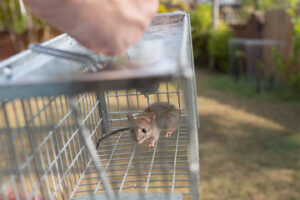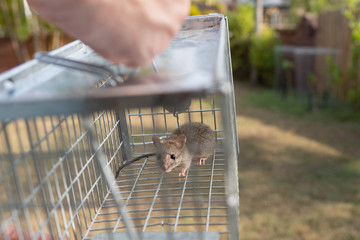 Pest infestations can be a nuisance, posing health risks and damaging property. While various methods exist to control pests, traps remain one of the most effective and environmentally friendly solutions. This guide will delve into Pest Control Knoxville TN traps, exploring their types, uses, and effectiveness in managing different pest populations.
Pest infestations can be a nuisance, posing health risks and damaging property. While various methods exist to control pests, traps remain one of the most effective and environmentally friendly solutions. This guide will delve into Pest Control Knoxville TN traps, exploring their types, uses, and effectiveness in managing different pest populations.
Traps are devices designed to capture, kill, or monitor pests, often used as part of integrated pest management strategies. These devices come in various forms, each tailored to target specific types of pests, ranging from insects to rodents and small mammals. Traps function by luring pests with bait or attractants into a mechanism that prevents their escape, thereby reducing pest populations and minimizing damage to property and crops.
The effectiveness of traps largely depends on their design and placement, as well as the behavior and biology of the targeted pests. Traditional snap traps, for example, utilize a spring-loaded mechanism that snaps shut when triggered by the pest, providing a swift and humane method of killing rodents like mice and rats. Glue traps, on the other hand, use a sticky adhesive surface to capture insects, spiders, and other small pests, though they can also ensnare unintended targets such as birds and reptiles if not used carefully.
In recent years, advancements in technology have led to the development of electronic traps, which employ bait to attract pests into an enclosed chamber where they are electrocuted. These traps are highly effective for killing rodents and are considered more humane than traditional snap traps. Live traps, meanwhile, are designed to capture pests alive without harming them, making them suitable for those who prefer to release captured animals back into the wild rather than resorting to lethal methods.
Pheromone traps represent another innovative approach to pest control, utilizing synthetic chemicals that mimic the scent of female pests to attract males. These traps are commonly used to monitor and control populations of insects such as moths, beetles, and fruit flies, offering an environmentally friendly alternative to chemical pesticides. Overall, traps play a crucial role in pest management by providing targeted and sustainable solutions for controlling pests while minimizing the impact on non-target species and the environment.
Types of Pest Control Traps:
Snap Traps:
-
- Snap traps are one of the oldest and most common types of pest control traps.
- They consist of a spring-loaded mechanism that snaps shut when triggered by the pest.
- Snap traps are highly effective for capturing rodents like mice and rats.
- However, they can pose risks to children and pets if not placed and handled properly.
Glue Traps:
-
- Glue traps employ a sticky adhesive surface to capture pests.
- They effectively catch insects, spiders, rodents, and other small pests.
- Glue traps are easy to use and dispose of, but they can cause distress to captured animals and may not always result in a quick death.
Electronic Traps:
-
- Electronic traps use bait to attract pests into an enclosed chamber, where they are then electrocuted.
- These traps are particularly effective for killing rodents and are considered humane compared to traditional snap traps.
- Electronic traps are reusable and can be used indoors and outdoors.
Live Traps:
-
- Live traps are designed to capture pests alive without harming them.
- They are commonly used for catching rodents, squirrels, and small mammals.
- Live traps are ideal for those who prefer to release captured animals back into the wild rather than killing them.
Pheromone Traps:
-
- Pheromone traps utilize synthetic chemicals that mimic the scent of female pests to attract males.
- They are effective for monitoring and controlling populations of insects like moths, beetles, and fruit flies.
- Pheromone traps are typically used in agricultural settings but can also be employed in residential areas.
Uses of Pest Control Traps:
Residential Pest Control:
-
- Pest control traps are commonly used in homes to manage infestations of rodents, insects, and other pests.
- They can be placed in attics, basements, kitchens, and other areas where pests are likely to dwell.
- Traps should be strategically positioned near entry points, food sources, and nesting sites for maximum effectiveness.
Agricultural Pest Management:
-
- Farmers and gardeners utilize pest control traps to protect crops from insect pests.
- Pheromone traps are often deployed to monitor pest populations and assess the need for intervention.
- Traps can also be used in conjunction with other pest control methods such as pesticides and biological controls.
Commercial and Industrial Settings:
-
- Pest control traps are essential in commercial and industrial facilities to comply with health and safety regulations.
- They are used to prevent contamination of food products, damage to equipment, and transmission of diseases.
- Regular inspection and maintenance of traps are crucial to ensure their effectiveness in high-risk environments.
Effectiveness of Pest Control Traps:
- The effectiveness of pest control traps depends on various factors, including the type of trap, placement, bait used, and environmental conditions.
- Snap traps and electronic traps are generally considered highly effective for killing pests quickly.
- Glue traps can be effective for capturing insects and small rodents but may not be as humane as other methods.
- Live traps are effective for catching pests alive, but releasing them far from the capture site is crucial to prevent re-infestation.
- Pheromone traps are effective for monitoring pest populations and can help prevent outbreaks when used as part of an integrated pest management strategy.
Cost is a significant consideration when implementing pest control measures, and the expense can vary depending on several factors. Firstly, the type of pest control traps chosen plays a crucial role in determining the overall cost. Traditional snap traps and glue traps are generally more affordable options, with prices varying based on the brand and quantity purchased. On the other hand, electronic traps and pheromone traps tend to be more expensive due to their advanced technology and specialized mechanisms. Live traps, while effective, may also incur higher costs due to their humane design and reusable nature.
Secondly, the size and severity of the pest infestation can impact the total cost of implementing pest control traps. A minor infestation may only require a few traps placed strategically around the property, resulting in lower expenses. However, widespread or persistent infestations may necessitate the use of multiple traps in various locations, increasing both material and labor costs. Additionally, the need for ongoing monitoring and maintenance of traps can contribute to long-term expenses, particularly in commercial and agricultural settings where pest control is an ongoing concern.
Furthermore, the cost of pest control traps may include not only the initial purchase price but also associated expenses such as bait, replacement parts, and disposal fees. Quality bait is essential for attracting pests to the traps, and the cost of replenishing bait supplies should be factored into the overall budget. In some cases, traps may need to be replaced or repaired over time due to wear and tear or damage caused by pests, adding to the overall cost of pest control efforts. Additionally, proper disposal of trapped pests and used traps may incur additional fees, particularly for environmentally friendly disposal methods.
Overall, while pest control traps offer an effective and environmentally friendly solution for managing pest infestations, it’s essential to consider the associated costs when planning pest control strategies. By understanding the factors that influence the cost of pest control traps and budgeting accordingly, homeowners, farmers, and businesses can make informed decisions to protect their property and mitigate the financial impact of pest infestations. Moreover, investing in high-quality traps and professional pest control services may ultimately prove cost-effective by reducing the risk of property damage and minimizing the need for costly repairs and treatments in the future.
Pest control traps are versatile tools for managing pest infestations in residential, agricultural, and commercial settings. Homeowners, farmers, and businesses can implement proactive pest control measures to protect their property and health by understanding the different types of traps available and their uses and effectiveness. However, it’s essential to use traps responsibly and considerately to minimize harm to non-target species and the environment.
